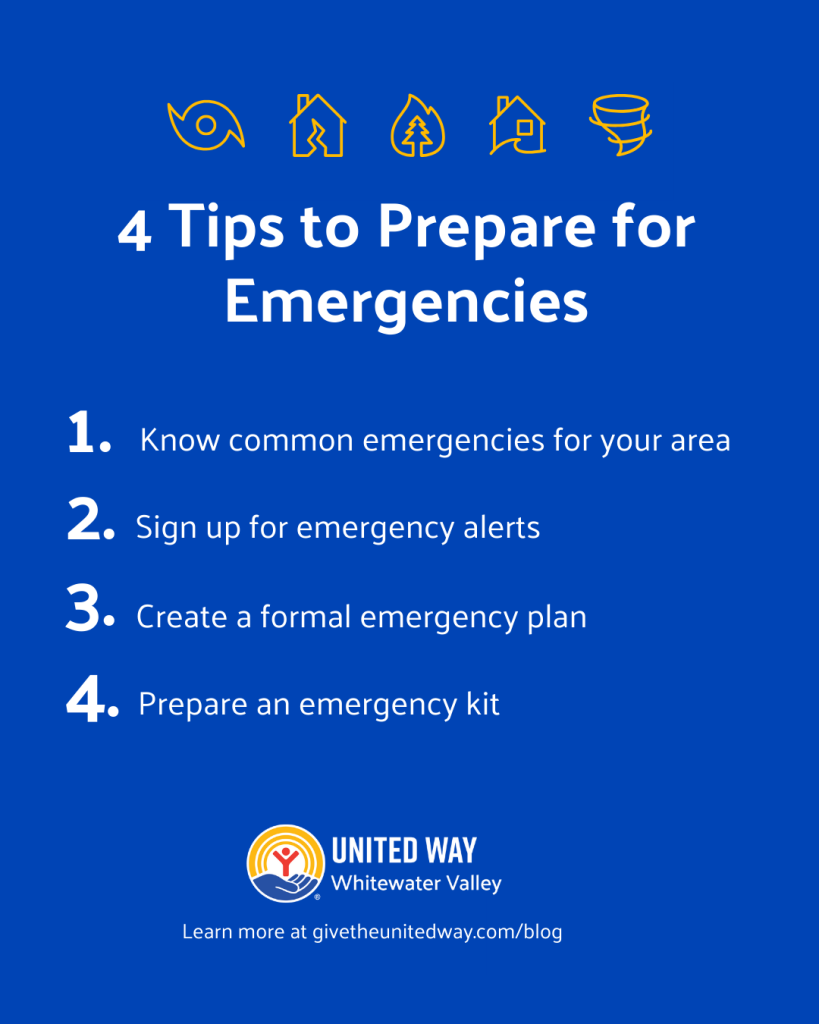
September is National Preparedness Month, and preparedness starts at home. With fall storms and winter weather around the corner, it’s the perfect time to take small steps that prepare your family, your home, your neighbors, and your community for emergencies like fires, power outages, floods, frozen pipes, and tornadoes. By taking steps now, you can be in control of both your safety and those you care about before, during, and after a disaster.
KNOW YOUR RISK
The most common weather emergencies in our area include heavy rain and flooding and severe storms with high winds and the possibility of tornadoes. Flooding brings with it the possibility of impassable roads, and high winds bring with them the possibility of downed trees and power lines. So, it’s important to have a plan for sheltering in place or heading to a nearby tornado shelter if there’s no space in your home without windows or outside walls on the lowest level of your home. Having a backup power supply for critical systems like phone and Internet, medical equipment, refrigerators and freezers, and heat or air conditioning would also reduce risk.
In addition, parents with children in local schools may want to be prepared for school-specific emergencies, and adult children with aging parents may want to be prepared for emergencies in senior living communities.
Every household should also be prepared for an unexpected fire, water or gas leak, or increase in carbon monoxide within their homes and take preventive steps to protect against these risks. Know your risk.
Health emergencies are also important to prepare for. Do you and your family have health conditions that might require special assistance from emergency first responders? If so, do you have a medical alert system or medical alert bracelet? Do you have a designated Medical Proxy and health care directive?
A full list of hazards is available on Ready.gov, a website associated with the Federal Emergency Management Agency (FEMA). Additional preparedness information is available through the National Fire Protection Association.
Have children or own a business? Be sure they are ready in an emergency as well.
Being prepared will both help reduce risk and ensure emergency responders can help you effectively.
SIGN UP FOR EMERGENCY ALERTS
Be sure to enable emergency alerts or bookmark resources associated with the National Weather Service, Federal Emergency Management Agency (FEMA), your child’s school, county emergency management agency, fire department, local police department, and travel advisory map. Bookmark your local news stations on social media like Facebook, Insta, and X (formerly Twitter) for critical updates and alerts during the time of a crisis in your community. You may also want to have a NOAA weather radio on hand, especially during power outages.
- National Weather Service: List of Active Alerts, About Wireless Emergency Alerts Messages
- Wayne County Emergency Management Agency: Facebook page, Text Your Zip Code to 888777 to Receive Alerts via the Nixle App, or go to local.nixle.com /register to Sign Up for Email Alerts
- Union County 911 Communications: Facebook page
- Download the Indiana Travel Advisory Map App or bookmark in.gov/dhs/travel-advisory-map/
- Download the FEMA App
DEVELOP AN EMERGENCY PLAN
Building a family emergency plan means considering questions like these:
- How will I receive emergency alerts and warnings?
- What is my shelter plan?
- What is my evacuation route?
- What is my family/household communication plan?
- Do I need to update my emergency preparedness kit?
Check each link above for tips on how to get started, then draft your emergency plan using FEMA’s online template.
